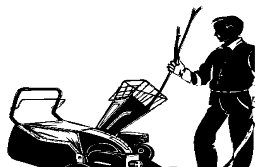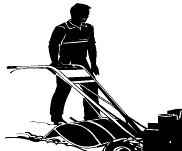Power raking [Thatching] service
Pitchforks and rakes have long been a mainstay in lawn and garden owners’ arsenal of tools. While these tools can turn garden soil, dig up transplants and harvest potatoes, their use in lawns to aerate the soil or tear out thick layers of thatch is labor-intensive. Machines now found in rental stores and garden supply catalogs do the exact same job, while requiring less time and energy.
Power raking – sometimes called vertical mowing – is a great way to reduce thatch, particularly in such warm-season grasses as bermuda, buffalo grass and zoysia. Plus, its results look less disruptive to growing grass than core aeration’s. But, other than removing thatch, power raking does little to improve air, water and nutrient access to turf roots. So, it’s no substitute for a core aerator when soil compaction and/or heavy soils are also a problem.
-
Vigorous grass varieties
-
Acidic conditions [especially within the thatch layer itself]
-
Low soil oxygen levels
-
Excessively high plant nitrogen nutritional levels
-
Infrequent and very high mowing heights
-
Thatch can be managed with vertical mowing, core aerification, and fertilizer. These techniques keep pest problems to a minimum, reducing the need for any pesticides. Also, healthier grass plants use soil nutrients more efficiently. Organic materials [grass clippings, etc.] decompose faster, releasing nutrients that help keep lawns healthy.

But even when proper cultural practices are used, there are still times when some pest control or fertilizer supplements are necessary. For example, even though all the clippings may be returned to the lawn, they still may not be providing enough nitrogen to maintain proper turf grass quality and density. Because denser turfs provide better protection against runoff and leaching, additional fertilizer may be warranted to achieve desired density.
Insects may also reach serious damage levels in the best of lawns. Turf loss to insects can result in a multitude of other problems such as weed invasion or erosion problems. Applying the proper control, chemical or biological, may be the way to head off these problems.
Lawns that have been poorly maintained for years may require both herbicides [to eliminate weeds] and fertilizers [to speed recovery] before appropriate cultural practices can be expected to work.
*$60.00 no labor, $100.00 will include the service, hand raking the dead grass, mowing the lawn and disposal of the garbage. Excess garbage will incur a dump fee.